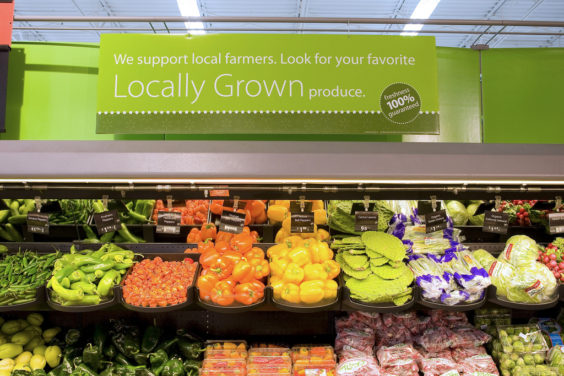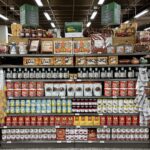It seems everyone is searching for savings these days, whether by clipping coupons, seeking out sales or just looking for less expensive options. But when it comes to one particular type of food, many shoppers say they’re willing to set aside their savings strategies and pay a premium.
According to “Ripe for Grocers: The Local Food Movement“, a new study by the consulting firm A.T. Kearney, 70% of shoppers surveyed would gladly pay more for groceries that are grown locally. A third of those say they’d pay at least 10% more.
So is “local” becoming the new “organic”?
It wasn’t long ago that organic was the premier, premium-priced product category. But now, organic has gone mainstream. Walmart is introducing a new line of lower-priced organic products, and Whole Foods is trying to keep up by lowering its own prices. GMO-free is also a hot category now, but a recent survey from the consulting firm The NPD Group found that two-thirds of primary grocery shoppers aren’t willing to pay more for GMO-free products.
Locally-grown food, though, is something that shoppers are willing to pay extra for. The fast-growing category is now a $9 billion-a-year business, the A.T. Kearney report says. “Local food is fast becoming a necessity for attracting and maintaining customers,” the report advises retailers. “The availability of local food is an important factor in what (shoppers) buy and where they buy it.”
The survey found that two-thirds of shoppers who buy local, do so in order to help the local economy. Others believe local food provides better and healthier choices. And most think farmers’ markets and specialty stores are the best places to buy local food.
But the fact remains that most people do most of their grocery shopping at the supermarket. And many local food fans view their supermarkets with suspicion when it comes to the “local” options they provide.
“Many customers believe that retailers tailor the term ‘local’ to their advantage with little transparency into how they define it,” the report reads. “Fruits and vegetables harvested hundreds of miles away are often still declared local.”
The legal definition of “local” food is any food that’s transported less than 400 miles, or within the same state in which it’s produced. With that broad definition, many shoppers don’t necessarily trust supermarket signs that shout “locally-grown” with no further explanation. Customers’ desire to help the local economy, could actually be helping an economy that’s a seven- or eight-hour drive away.
In fact, 7% of those surveyed in the report say they don’t trust the “local” labels that their supermarkets display. Overall, nearly half say they’d buy more local food if they could, but their stores simply don’t offer local options.
The study recommends that more stores look into providing more local food – and if large retailers are concerned that buying locally is less efficient and more costly, well then they can boost their prices, since shoppers have shown a willingness to pay more for locally-grown food.
But only to a point. A third of shoppers say the reason they don’t buy more local food is because it’s too expensive. So if it really does go mainstream, and prices come down, soon even bargain hunters may be buying local.














